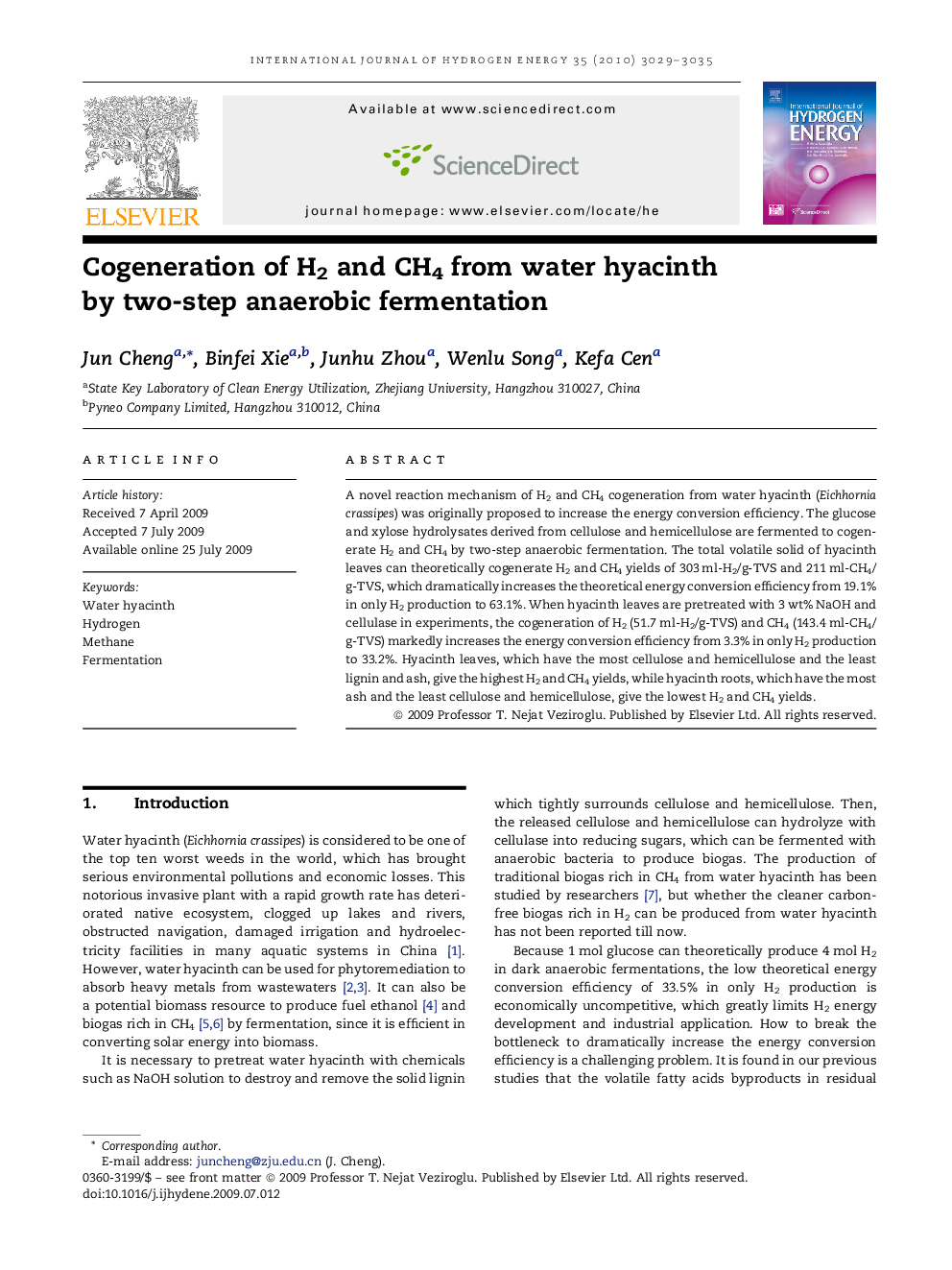| Article ID | Journal | Published Year | Pages | File Type |
|---|---|---|---|---|
| 1273300 | International Journal of Hydrogen Energy | 2010 | 7 Pages |
A novel reaction mechanism of H2 and CH4 cogeneration from water hyacinth (Eichhornia crassipes) was originally proposed to increase the energy conversion efficiency. The glucose and xylose hydrolysates derived from cellulose and hemicellulose are fermented to cogenerate H2 and CH4 by two-step anaerobic fermentation. The total volatile solid of hyacinth leaves can theoretically cogenerate H2 and CH4 yields of 303 ml-H2/g-TVS and 211 ml-CH4/g-TVS, which dramatically increases the theoretical energy conversion efficiency from 19.1% in only H2 production to 63.1%. When hyacinth leaves are pretreated with 3 wt% NaOH and cellulase in experiments, the cogeneration of H2 (51.7 ml-H2/g-TVS) and CH4 (143.4 ml-CH4/g-TVS) markedly increases the energy conversion efficiency from 3.3% in only H2 production to 33.2%. Hyacinth leaves, which have the most cellulose and hemicellulose and the least lignin and ash, give the highest H2 and CH4 yields, while hyacinth roots, which have the most ash and the least cellulose and hemicellulose, give the lowest H2 and CH4 yields.
